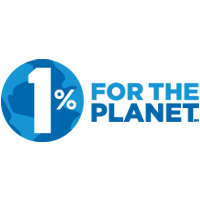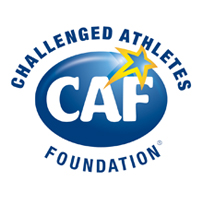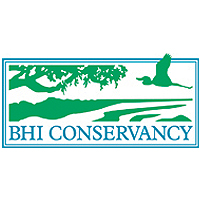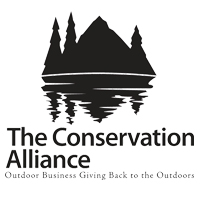My Time in the Desert, the Badwater Ultramarathon
2001 finisher
A 135-mile road race. OK, but 135 miles is longer than I had ever run. No aid stations so one would need at least a four-person crew and two vehicles. OK, I’ll get a crew. Start at 280 feet below sea level and finish at 8,340 feet including going to 5,000 feet twice for over 13,000 total feet of climb. OK, maybe I can do it. The average high temperature is 115 degrees and the low is 87 degrees. Well, now I’m scared.
For the past nine months I had thought of the Badwater 135 every day and night. I had signed up for one of the world’s toughest foot races. I bought the movie, ’Running on the Sun ’documenting the 1999 race. I had never seen such blisters, puking, and excellent runners talking incoherently. I read everything about the race and visited the race’s excellent web site at www.badwaterultra.com.
The race goes from Badwater, the lowest point in the US to the Mt. Whitney Portal through Death Valley during the hottest week of the year. Although not part of the race one can get a permit to go to the top of Mt. Whitney, at 14,494′, the highest point in the continental US.
Wow! How to do it all? The hard drive of my brain was flashing overload. The Mt. Whitney hike would take 12 to 15 hours. A difficult long day by itself but after 135 miles? I read several hiking reports and books. Mt. Whitney was considered a separate event and I packed a pack with gear just for the ascent. My pack would be ready to go at the Mt. Whitney Portal. My lottery permit was for Friday, which gave me the freedom to start as early as midnight or a practical late start of noon. With the Mt. Whitney planning out of the way I could concentrate on the Badwater 135.
Since Badwater is a road race, training was just miles of more miles. Everytime I looked at the end of my driveway there were an infinite number of roads to run but how much was enough or too much? An injury would wreck months of planning and training. Training for heat was another problem to solve. There are many ways to heat train. One method is to workout in a sauna increasing the temperature gradually to 160 degrees. Working out in a sauna to the same temperature as cooked meat didn’t sound reasonable so two weeks before the race I started wearing more clothing on my daily training runs. Starting with a black long sleeve poly top eventually I was wearing three layers of black clothing. The same gear as running at 20 degrees in the winter. The topper was the black wool stocking cap. After a few miles my brain felt like popcorn in a microwave oven. I was at my limit, if Badwater was hotter then I would be cooked.
Fluids, food, clothing, and medical gear were the main elements for race day. Clothing was easy, two sets of coolmax T shirts with black compression shorts, a few pairs of socks, one pair of NB 1220 road shoes and a Sun-Precautions desert type white hat. Exposed skin would get a coat of 30 Sunblock. The medical kit was a big bag with a variety of tapes, ointments, New Skin, needles, Band-Aids, and Succeed capsules.
We bought the food in Las Vegas. The full shopping cart had almost everything I had ever eaten at an ultra. I wasn’t sure what would taste good during the race.
Fluids were easy, ten gallons of water, two gallons of Succeed, and four liters of Coca-Cola. After adding the crew’s food and fluids we had to tie two suitcases onto the roof of the rented Ford Expedition.
By lottery I would start at 6:00 AM. Other starts were 8:00 and 10:00 AM. 6:00 AM was the coolest start but the 10:00 AM start had the advantage of knowing all the other runners’ checkpoint times.
At 6:00 AM it was 90 degrees, the sun hadn’t cleared the mountains yet to start baking Death Valley. The early miles were fun. I met a few people and played a game of leapfrog with runners and pace cars. My son, Aaron and daughter, Lorraine were crewing me for the first ten hour shift. My wife, Lorraine, son-in-law John Kulas and daughter-in-law Allison and grandsons Austin, Jordan, and Carter were back at Furnace Creek Ranch, the seventeen mile check point to cheer me on. The checkpoint was just a person with a clipboard. No stopping just a verbal acknowledgement as I ran by.
By now the race was getting a rhythm. The crew knew when I needed fluids and the temperature was rising. The next checkpoint was Stovepipe Wells at mile 42. At 118 degrees leaving Stovepipe Wells valley was slow and hot. I knew there were two runners ahead of me but couldn’t see their pace vehicles. There was no one close behind me. I was alone on the road with my pace vehicle and the heat. I won’t see another runner until dark near the Panamint Springs checkpoint.
Townes Pass summit at 4,965 feet marked the end of the long hot walk out of Stovepipe Wells. Ahead of me was six miles of steep downhill. The sun had slipped behind the West Mountains and it felt almost cool although it was 102 degrees. It was time to run. The grade was almost too steep but it felt good to be pounding down the road. My knees got a little sore so I eased up because I had only completed the easy half of the race.
Several hours ago I came up with my race plan. This race was so different with checkpoints about 25 miles apart and few major landmarks other than road signs. I was used to running from aid station to aid station four to ten miles apart. Sometimes my crew vehicle was stopping every quarter mile. The Vermont Trail 100 race popped into my mind. I had run this race in 1994 and 1995 and it was hot with miles of road running. My time averaged 21 hours for 100 miles. My plan was to complete the first 100 miles in 21 hours. I knew that the last 13 miles were all up hill and almost everyone walked to the finish line. My only problem was the 22 miles after the first 100 miles. But at least I had a goal although 100 miles was still a long way away.
As I neared Panamint Lake I could finally see the taillights of a pace car miles ahead. Supper was a seven-minute break next to Panamint Lake. The sun shining across the dry sand lakebed surrounded by pink and purple mountains was beautiful. My eyes were enjoying the beauty but the rest of my body was tired and sore. Still 100 plus degrees.
I passed Rudy Afanador a mile before Panamint Springs Resort. He was at the side of the road dressed in full whites, head down not looking good. In a few minutes he passed me just ahead of the check in but headed back to the crew vehicle after saying no one was ahead of us. A short time later wearing shorts and a singlet he repassed me in the dark speedwalking that long up hill to 5,050 feet. I would see the taillights of his crew vehicle moving further away the rest of the night. He would be the only runner I would see until the race ended.
The Darwin checkpoint at 5,050 feet was just a guy under a canopy. Easy to see if you are the only person on a dark road but my crew vehicle never saw the checkpoint. From Darwin it was a gradual 17 miles downhill. Good running. A million stars in the sky and 70 degrees. It felt almost cold, as it was a 50-degree temperature change on my body. My crew cheered me on as I hit the 100-mile mark at 21:35 hours. Not bad, only 35 minutes off my goal. The new goal was Lone Pine. The next 9 miles were gradual down hills but now my legs and back were sore. My stomach was upset, I was retching beside the road, and I could feel two blisters on my left foot. I hadn’t sat down in three hours. I told Aaron and Allison I needed a 15-minute nap but not to let me oversleep as I crawled into the back seat with my Mt. Whitney gear as a pillow. Leg pains woke me every five minutes. Aaron drained and taped my blisters. His first experience at blister repair. He reminded me later that my feet weren’t too sweet after 23 hours in the same socks. It was now dawn, I had fresh socks, taped blisters, and my stomach felt good. I was running down the road again but now I faced 11 miles of flats and the sun was heating the road up again. My body was extra sensitive to the heat and it seemed like it took forever to make any progress. Just run to the next road sign. Just run to the next road sign. My new goal. Easy to say but so hard to do when one can see a sign for miles. There were many walk breaks. Finally I arrived at the intersection that I thought was Lone Pine. When Allison said it was two more miles to the Dow Villa check point and the Whitney Portal road in Lone Pine I thought it was a cruel joke. It was a long two miles surrounded by truck traffic.
Finally I saw the turnoff to Mt. Whitney Portal road. 13 miles uphill and it was hot, over 100 degrees again. When asked how I felt I didn’t say hot anymore. Toast was my new word. I felt like I was in a toaster. I was hydrated but felt awful. I was only trudging up that long road because it was the quickest way to the finish line. It felt like the sun was baking my back and legs. Toast, just like toast in a toaster. Going through the Alabama Hills was pretty. 300 plus movies were made there. I hoped to hallucinate a few cowboys and Indians from those movies as I could have used the entertainment. We estimated it would take another 3 to 4 hours to get to the finish line. It seemed so far away but the only thing to do was to keep walking. The second crew vehicle arrived a few miles from the finish. Seeing the whole family boosted my energy. Daughter Lorraine would pace me to the finish. I joked about which was harder, running the race or taking care of three little boys. We passed a race sign that said one more mile. I was going so slowly that it felt like three miles. Eventually I could hear people clapping and ran the last 50 yards to the finish line. Chris Kostman, RD, took a few photos of my crew while I sat in a chair drinking water. 31:16:24 hours, earning a fifth place. Riding back down the mountain I yelled encouragement to a few runners but soon fell asleep, my legs would jump every few minutes reminding me of this long run. At the motel I headed for the shower and Aaron delivered a cold beer as requested days ago. I drank half a beer then flopped into bed for a short nap.
Later that night we walked across the street for beer and pizza. We ordered too much food. Before bed I double-checked my pack for the trip up Mt. Whitney. The alarm rang at 2:45 AM and we were driving to the trailhead by 3:30 AM.
We started up the trail at 4:22 AM. There were at least twenty other hikers around us. I didn’t feel bad just a little stiff and a cup of hot coffee had cleared my head. I was ready to begin another full day. I was in the middle between John and Aaron but after a while I took the rear. I was too slow. We made treeline around sunrise as planned. It was spectacular. Aaron and John had never been on a big mountain and didn’t know what to expect but now they were all smiles. Later at 13,000 feet the dull headaches would start. We summited at 11:50 AM and took all the obligatory photos. It was beautiful. The trail down was long and slow. I didn’t feel bad I just couldn’t move very fast nor accurately and there weren’t any good places to fall. We did run the last mile, as it was a wide section finishing at 5:23 PM. Just over 13 hours. I had gone from the lowest point to the highest point of the continental US in 53:50 hours. After all the months of planning and worry my race was concluded. The next day driving back along the course there wasn’t a trace of the seventy-one runners, their crews, or vehicles. Looking at the empty road I felt like it was all a desert dream.








